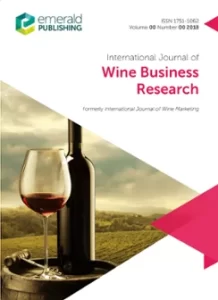Top cited article for this journal, from the last 12 months according to Crossref (Last updated: January 2024)
The common agricultural policy subsidies and the technical efficiency of Hungarian wine farms
Imre Fertő, Štefan Bojnec
Fertő, I. and Bojnec, Š. (2023), “The common agricultural policy subsidies and the technical efficiency of Hungarian wine farms”, International Journal of Wine Business Research, Vol. 35 No. 3, pp. 413-426.
Article publication date: 27 March 2023
Abstract
Purpose
The literature argues on ambiguous impacts of different types of the common agricultural policy (CAP) subsidies on farm technical efficiency (TE). The purpose of this paper is to estimate and analyse the TE and the impact of the CAP subsidies on the TE of wine farms in Hungary using the farm accountancy data network data set in the period 2013–2019.
Design/methodology/approach
The authors use stochastic frontiers analysis (SFA) models to estimate the TE scores for the Hungarian wine farms with four wine farm-level inputs in terms of agricultural land, labour, capital and intermediate consumption. The TE scores are explained by the CAP subsidies and economic wine farm size. The different SFA models were applied with robustness tests to investigate the drivers of the TE values of wineries.
Findings
Like for Hungarian farms in general, the distribution of the wine farm structure is a dual with a greater number of smaller wine farms and a smaller number of bigger wine farms. The agricultural land, capital and intermediate consumption are significantly positively associated with the wine farm TE. With higher capital intensity wine farm TE increase. The results imply that the CAP subsidies decrease the TE of the Hungarian wine farms, whereas economic farm size increase.
Originality/value
To the best of the authors’ knowledge, this is one of the first specific efficiency studies on the wine sector in the Central and Eastern European region and the first one for Hungary to evaluate the TE at wine farm level and to assess the impact of CAP subsidies and economic farm size on wine farm (in)efficiency to apply production technologies and use farm resources. This study is among the first that applied the fixed-effects stochastic frontier model at the wine farm level to measure the drivers of the TE scores.



